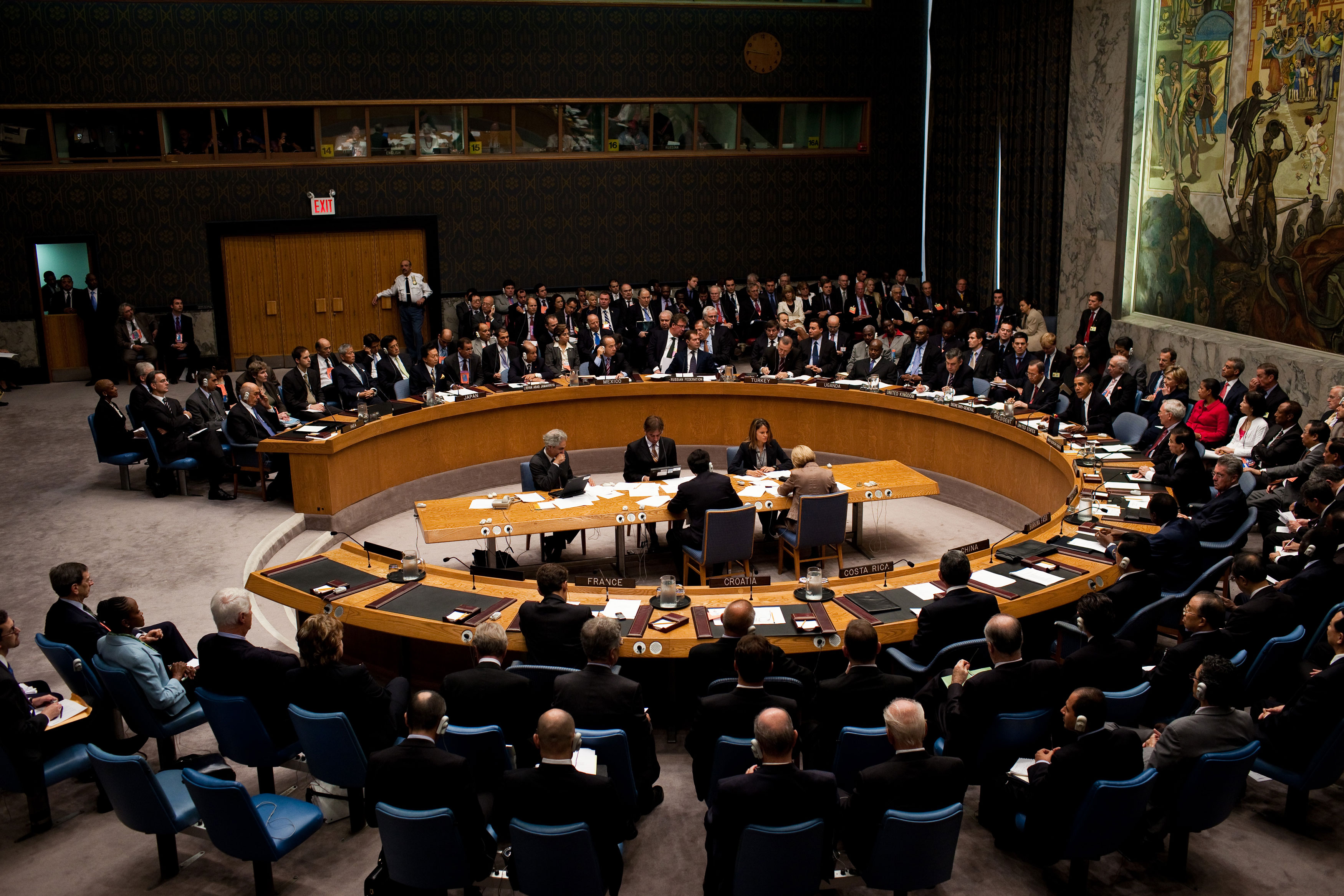
Meet the Security Council

On 1 January, the Security Council welcomed Bolivia, Ethiopia, Italy, Kazakhstan and Sweden into its ranks as non-Permanent Members. They replace Spain, Malaysia, New Zealand, Angola and Venezuela, whose terms ended in 2016. As 2017 begins, these new Members will be finding their footing within the Council and bringing their talents to the table as the representatives of their regions. With the new Council Members learning the ropes, this is a good time to examine the Security Council in more depth.
Council Membership
The Security Council consists of 15 Member States. There are Permanent and non-Permanent Members. The five Permanent Members of the Security Council (P5) are China, France, Great Britain, Russia and the United States. Non-Permanent membership is held in two year terms and is staggered so that five of the ten non-Permanent Members are replaced each year. Membership is decided by the General Assembly and allocated by geographic region. It is balanced to ensure equal and fair representation from around the world.
The 2017 Security Council election was held in on 28 June 2016. During the 2016 election, Italy and the Netherlands agreed to to split their seat, allowing Italy the right of representation in 2017 and the Netherlands the right of representation in 2018—something that has not happened in more than five decades. Election to the Security Council requires the support of two-thirds of the General Assembly. Neither Italy nor the Netherlands was able to secure sufficient votes, so the two States reached this compromise.
The Security Council’s mandate
Most people know about the Security Council’s role to protect international peace and security. But the United Nations Charter outlines four mandates for the Security Council:
- to maintain international peace and security.
- to develop friendly relations among nations.
- to cooperate in solving international problems and in promoting respect for human rights.
- to be a centre for harmonizing the actions of nations.
The Council’s ultimate goal is to bring States together to peaceably prevent and resolve conflict. The Council does so in a number of ways. It can act as a mediator between parties, provide neutral or third party investigations into conflicts, appoint special envoys, dispatch missions and help craft peace agreements. When this fails, the Council has the ability to step in more forcefully. The Security Council is able to deploy peacekeeping forces, which can establish and enforce ceasefires. In more extreme cases, the Council can impose sanctions, encourage States to sever diplomatic ties, impose blockades and endorse the use of force in an effort to re-establish peace and security to a situation.
The Council’s changing mandate
The world’s interpretation on the Council’s mandate has grown along with the United Nations. In the beginning, the Council took a very narrow view of its mandate, but as the United Nations grew and more clearly defined itself as an organization, the Council endorsed a more involved application of its mandate. One example of this is the Council’s involvement in humanitarian crises. While it is almost assumed that the Council may intervene when conflicts lead to humanitarian crises, this was not always the case. In the late 1950s Secretary-General Dag Hammarskjold challenged the United Nations to intervene when humanitarian crises threatened countries and regions. Ever since, the United Nations and the Council have taken a more active role in caring for the people affected by conflicts. The Council continues to adapt its mandate today. In 2016 the Council dealt with issues such as refugees, human trafficking and nuclear non-proliferation, showing us, as the world changes, the Council has continued to adapt.
The binding nature of Security Council resolutions
The Council’s authority and ability to intervene in matters of international peace and security is grounded in the unique, binding nature of its resolutions. Unlike resolutions passed in the General Assembly or other United Nations bodies, Security Council resolutions are binding. All Member States agree to abide by the resolutions passed by the Security Council when they join the United Nations. This agreement is an acknowledgement of the important work that the Council does, and, without it, the Council would be largely ineffective.
Consent of the Permanent Members
Aside from permanent representation on the Council, the Permanent Members also have “veto power” over substantive votes. The Charter requires the consent (or abstention) of the five Permanent Members on all substantive issues. This means that any substantive resolution will fail to pass if one of the Permanent Members uses their veto power, even if all of the other Members are in favor of a resolution.
This rule has also led to criticism of the Council and a widely held belief that non-Permanent Members don’t have any power. This is not true, though. All resolutions still require nine affirmative votes. The Permanent Members can only accomplish their States’ goals and pass resolutions with the support of other Members. Non-Permanent Members also often end up playing key mediator roles inside the Council and among states party to conflicts that the Council is discussing. Navigating the politics of the Council can be tricky for non-Permanent Members, but they are far from powerless. Bolivia, Ethiopia, Italy, Kazakhstan, and Sweden, along with the other five non-Permanent Members will surely play an important role in shaping international peace and security over the next year.
Keep Up With The Accords
More to read
The AMUN Accords is a premier resource for fact-based Model United Nations simulations. We are always looking for new contributors. Want to write for the AMUN Accords? Check out out the submission guidelines and then get in touch!




